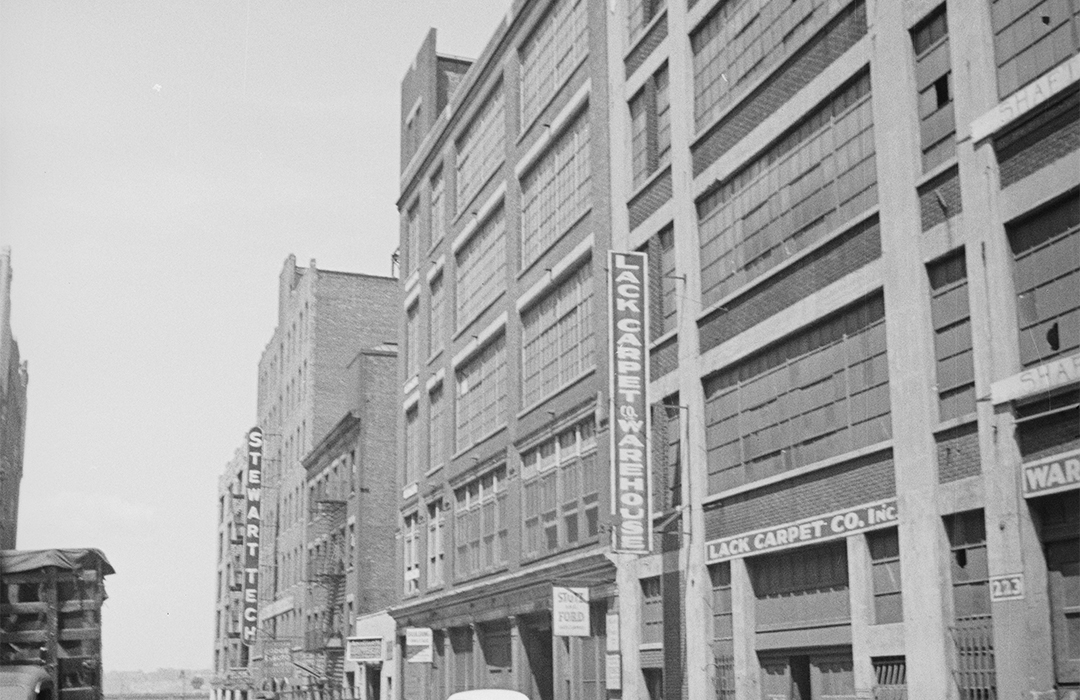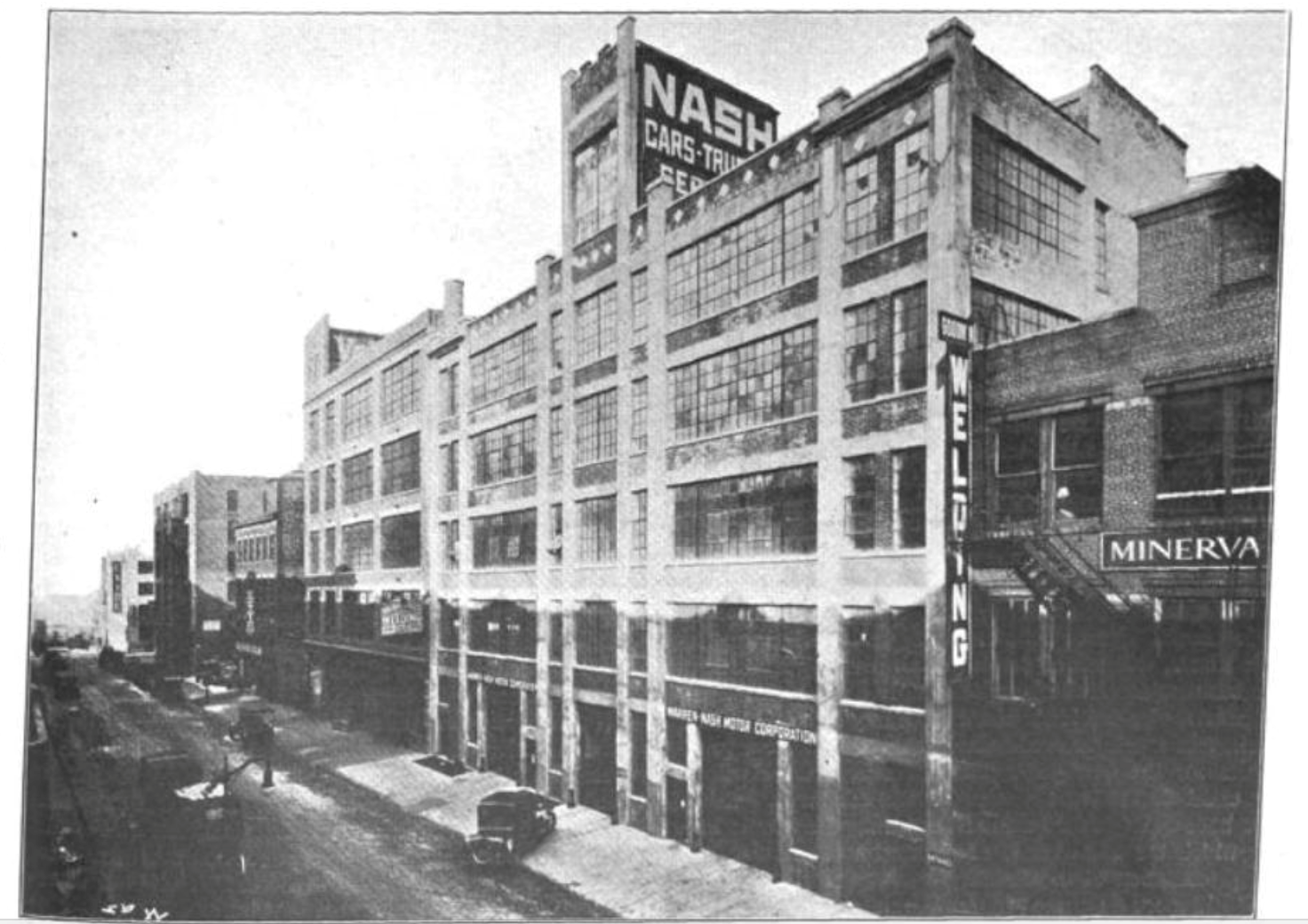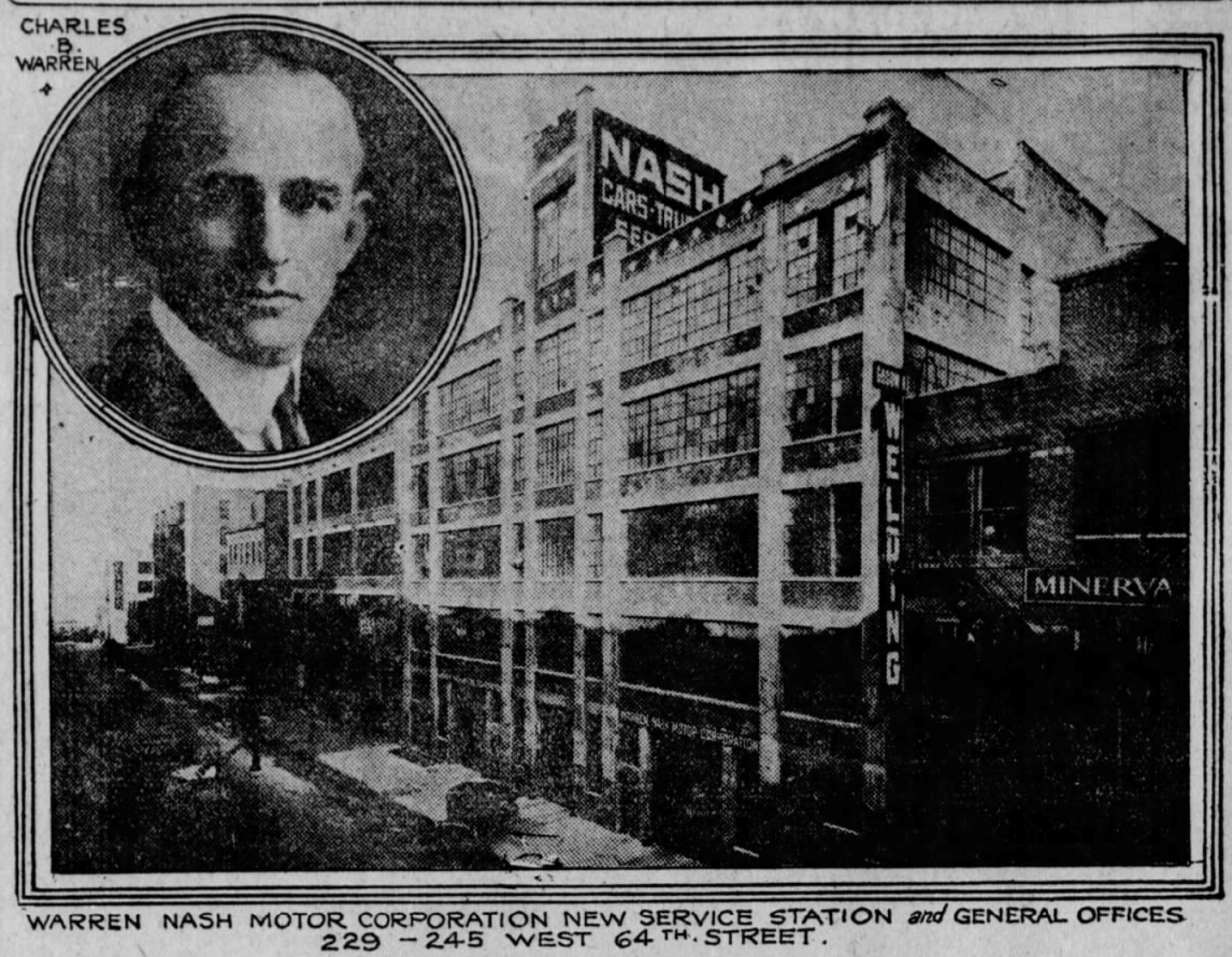
229-245 West 64th Street
by Jessica Larson
In 1921, a prominent new addition to San Juan Hill’s business landscape opened on West 64th Street: the Warren-Nash Motor Corporation. This massive five-story building, with 50,000 square feet of floor space, was hailed as a testament to the city’s adaptation to the invention of the automobile.
The area was no stranger to the infrastructure that accompanied the proliferation of cars. By 1921, over a dozen buildings related to automobile storage, repair, or sales were on the block between Amsterdam and West End Avenues, on the south side of West 64th Street and the north side of West 65th Street. Before these structures, many of the lots were used as stables. Beginning in the mid-to-late nineteenth century, stables began to be more commonly sited far from more residential areas; this was in part due to the smells of horses and also the fact that stables were prone to fires due to the presence of hay. Those who owned horses (either for business purposes or for their own transportation) rented stables to keep their horses. Before 1900, San Juan Hill was still fairly sparsely populated. As cars began to replace horse-drawn transportation, stables were often converted into garages. The high concentration of stables in San Juan Hill facilitated the easy transition to a hub for automobile maintenance, sales, and storage.
As cars began to replace horse-drawn transportation, stables were often converted into garages.
While early precedents to the modern automobile existed since the 1880s, it wasn’t until Henry Ford’s moving assembly line of 1913 that cars became widely available to American consumers. To support this new method, Ford built the Highland Park Ford Plant in Michigan. Designed by architect Albert Kahn, this factory established a new architecture for manufacturing. The first Warren-Nash building at 229-239 West 64th Street mirrored this design, with large glass windows, concrete columns, steel frame, and the inclusion of office space. The company was founded by Charles Warren Nash, who had previously been a cofounder of the Buick Motor Corporation. The new company soon had locations throughout the city.
The Warren-Nash Co. was previously located a few blocks east at 18-20 West 63rd Street. The new building was designed to showcase the company’s modern range of cars. One of the more notable features was a large elevator that ran from the ground floor to the roof; cars could be taken to the rooftop, where they could be tested. On the building’s first floor were offices; the fourth floor was storage for replacement parts; the first, second, and third floors were for servicing cars. The existing building just to the west at 241-245 West 64th Street was purchased by Warren-Nash, also a five-story garage, was used as a showroom. It was previously used by the Town Taxi Company. This was the company’s second showroom in the city – the first was at 1928 Broadway.
The Warren-Nash Motor Corporation didn’t last long in the space. By 1930 the Flint Motor Car Corporation took over the buildings. Then the Gertner Baking Corporation operated out of the structure. By 1955, the Lack Carpet Company used the building at 229-239 West 64th. The lots are now part of the Fiorello H. LaGuardia High School of Music & Art and Performing Arts.
Resources:
“Attract Good Business.” The Automobile Journal 69, no. 5. Pawtucket, RI. 1921.
“Big Garage Leased.” The Sun. November 6, 1917: 9.
“Charles B. Warren and New Warren-Nash Home.” New York Herald. January 2, 1921: p. 53.
McShane, Clay and Joel A. Tarr. The Horse in the City: Living Machines in the Nineteenth Century. Johns Hopkins University Press. 2011.
“Nash Stock Cars Win Big Honors in French Test.” Brooklyn Daily Eagle. June 22, 1930: 12.
New York Supreme Court. Appellate Division- First Department: Affidavit of Frances F. Kent in Opposition to Order to Show Cause. The Reporter Company, Inc. 1942.
“We Have Backed Our Judgement With a $37,000,000 Order for Nash Cars.” The Saturday Evening Post 190, no. 10. Philadelphia, PA. 1917.
Jessica Larson is a PhD Candidate in the Department of Art History, The Graduate Center, CUNY. She is also the Joe and Wanda Corn Predoctoral Fellow at the Smithsonian American Art Museum & National Museum of American History




